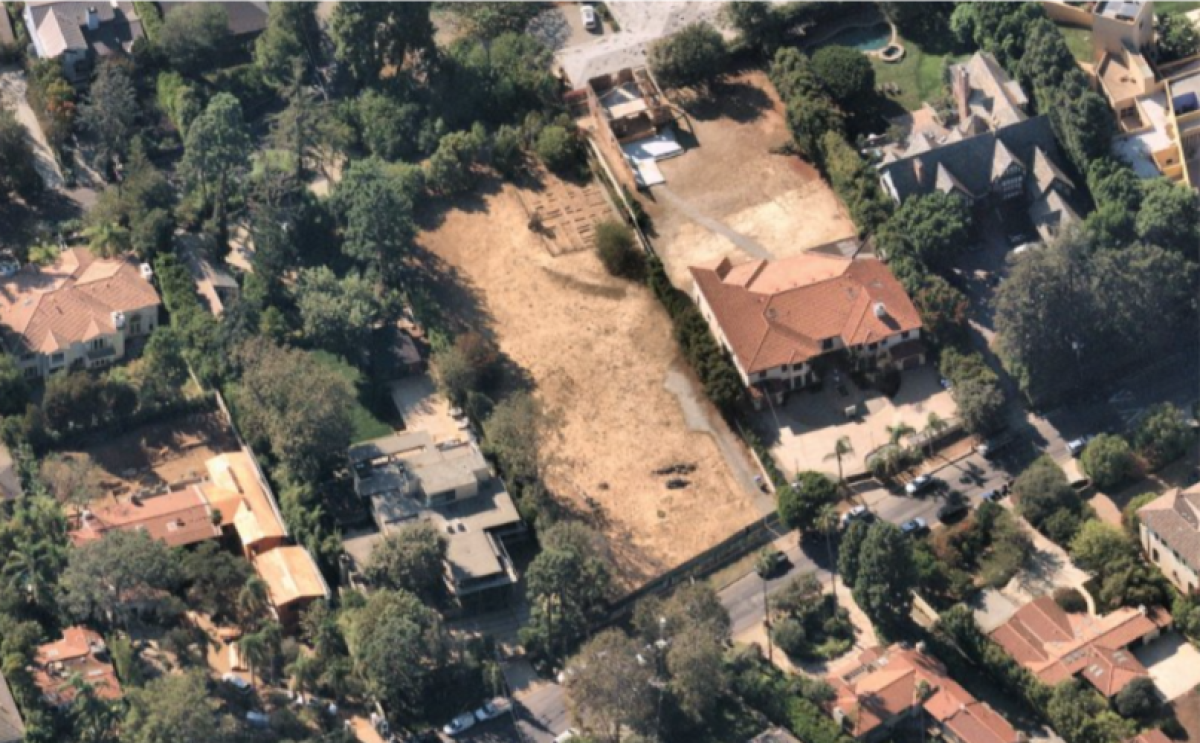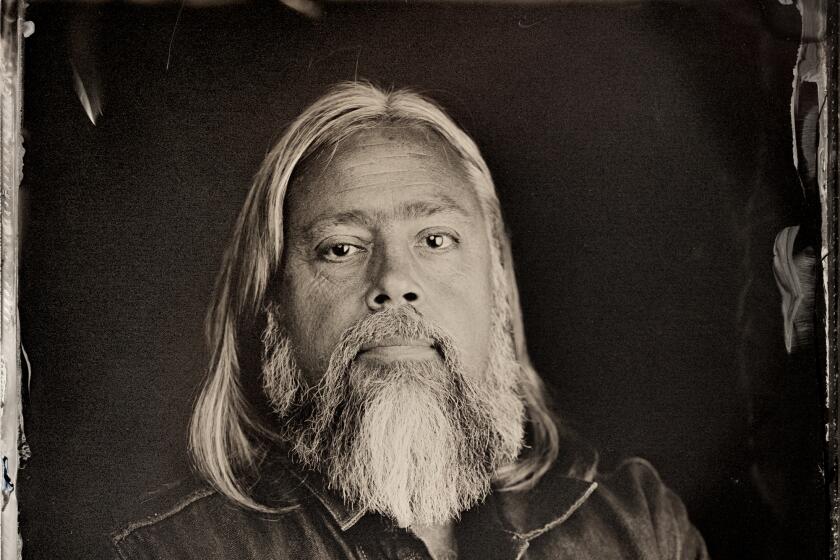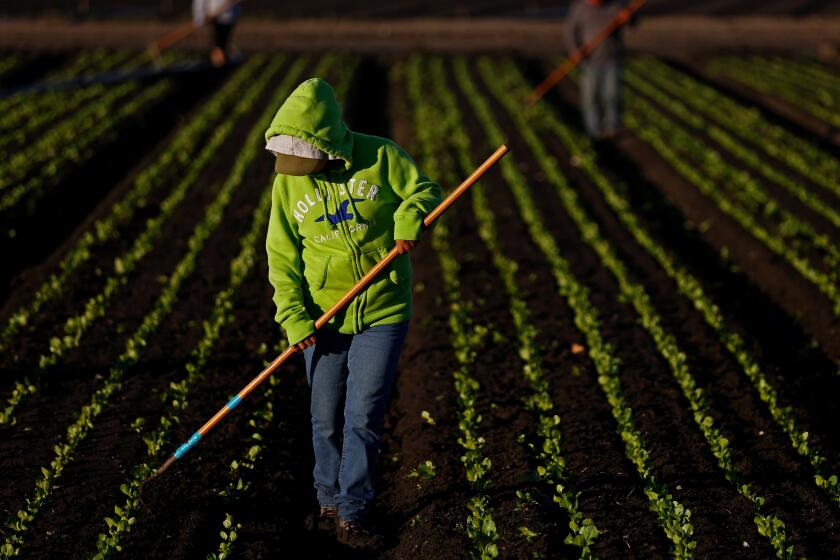There’s potential for nature and redemption tucked into ‘empty’ spaces

- Share via
Book review
A Natural History of Empty Lots: Field Notes From Urban Edgelands, Back Alleys, and Other Wild Places
By Christopher Brown
Timber Press: 304 pages, $30
If you buy books linked on our site, The Times may earn a commission from Bookshop.org, whose fees support independent bookstores.
It is easy to love Griffith Park, with its stunning views and iconic observatory. Same goes for Joshua Tree National Park, drawing millions each year with its transcendent desert views and otherworldly flora. But who will care about the abandoned transit lines, the forgotten alleys, the dusty lots behind barbed-wire fences? Christopher Brown, that’s who. And readers of his essential new book about overlooked urban spaces, “A Natural History of Empty Lots.”

Brown is a lawyer and science fiction writer, who, for about 15 years, has owned a trashed-out industrial lot in East Austin, Texas. Soon after the deactivated petroleum pipeline there was removed, he and his partner built a house into the hill, with a striking local prairie project on its bifurcated roof.
Perhaps because you can see the house on Apple TV, this book doesn’t focus as much on the building project as it might have. Instead, it is part memoir, part manifesto, and part paean to the wild plants, insects and animals that Brown encounters in his perambulations.
‘Becoming Little Shell’ is the story of one man discovering his heritage, but along the way he sees how so many others have been dispossessed in so many ways.
He has a long-abiding love for walking to unexpected places while paying close attention. He may have, in the past, crossed boundaries that indicated this was not public property. In his love of wandering, he shares something with British ramblers, although he explains that our laws are quite different. He’s also borrowed the term “edgelands” from the British but revises its meaning, disconnecting it from converted public spaces to something more like dead-end planting strips, freeway entrances and industrial neighborhoods.
He avoids a straightforward narrative, instead weaving together stories of riverside explorations with his son, details of the Homestead Act and witnessing a fox running through the fence of his double dead-end lot. “Despite its industrial brutality — and maybe even because of it — our corner is one of those spots where the wildness sneaks back into our world,” he writes. Meandering between the specifics of his land, the history of the region and the ideas of how humans interact with nature is by design, fitting for someone so committed to wandering as a way of finding truth.
From the Los Angeles River to San Francisco baseball, William A. Selby’s “The California Sky Watcher” examines the far-reaching consequences of the state’s climate.
He circles back to the same corners, the same bits of river, to tell a different part of his story. Raised in Iowa, Brown is a Gen X lawyer who was always drawn to untamed areas, a contrast to the endless orderly lines of corn and the “lifeless aftereffects of factory farming.” He glosses over much of his education and the details of his first marriage, apart from moving to Austin together and having a son. Now he’s married to artist and architect Agustina Rodriguez, and they have a young daughter. The house was finished around 2012.
After his first marriage ended, he began rediscovering nature in tandem with his son, through scouting and canoeing together on a wild stretch of the Colorado. Then he began doing the same alone, taking real joy in “the everyday wonders of the feral city.” To see the region through his eyes is to have a knowledgeable and attentive guide.
Two new books, taken together, reveal the sorry political history of American farming and its legacy that has made responsible stewardship of the land, agriculture and our food systems an uphill battle.
Although Brown is skeptical of the officially sanctioned wild parts of our cities, I felt like I had to immerse myself in nature while reading his book. I headed to the path along the L.A. River. The water was low but running, the mid-channel islands’ brush and trees growing, birds aplenty. I opened the Merlin app, and it told me the bird of the day was the great egret — I looked up to see a pair of them taking off from a treetop, huge white birds with black legs and such long necks that they fold them double when cruising. Well, that was a lovely surprise! This is exactly what Brown wants us to be able to do: witness wild creatures flourishing in our urban spaces, welcomed by us but left alone.
“Taxonomy can be the enemy of wonder, and sometimes survival,” Brown points out, explaining that often humans’ witnessing and naming something can lead to its commodification. Commodification, overconsumption, endangerment. The combination of climate and capitalism, Brown tells us, has led to “a world that has lost 69 percent of its wildlife population since my sixth birthday.”
His intervention is on the personal scale, to make his dead-end lot a place where the wild animals and insects run free. To experiment with phytoremediation, in which plants are cultivated to heal polluted soils. And at the neighborhood level, to help defend the unloved corners of East Austin where other activists were at work doing the same thing.
Unsurprisingly, all this activity resulted in other people seeing some value in previously unvalued land. What once was an empty warehouse might next be a fancy hotel. A billionaire put a factory nearby. The wild stretch of the Colorado River bordering his property may get shorter as capitalism encroaches on it. He outlines the many ways that the American continent was settled by people for whom owning land became the key to wealth and domination.
There is a tree on his lot called the Osage orange or hedge apple (Maclura pomifera) with large, brainlike fruits and dangerous thorns. If you don’t agree with him about the ravages of capitalism, I can see how his anticapitalist ideas might seem as prickly as the hedge apple. But I find them engaging, and the book is full of brainy fruit.
These plants, mostly unloved, date back to when megafauna inhabited North America, 11,000 years ago. What if our environment and society could last that long? Brown’s book is full of both evidence that it’s unlikely and hope that it could be possible. It will surely take big national parks, a combination of smaller state and local projects like the L.A. River, and cities’ commitment to preserving greenspaces, as well as the independent actions of a few edgeland homeowners. But we can all start to see how the wild is all around us, just by taking a walk.
Carolyn Kellogg is a former books editor of the Los Angeles Times.
More to Read
A cure for the common opinion
Get thought-provoking perspectives with our weekly newsletter.
You may occasionally receive promotional content from the Los Angeles Times.












